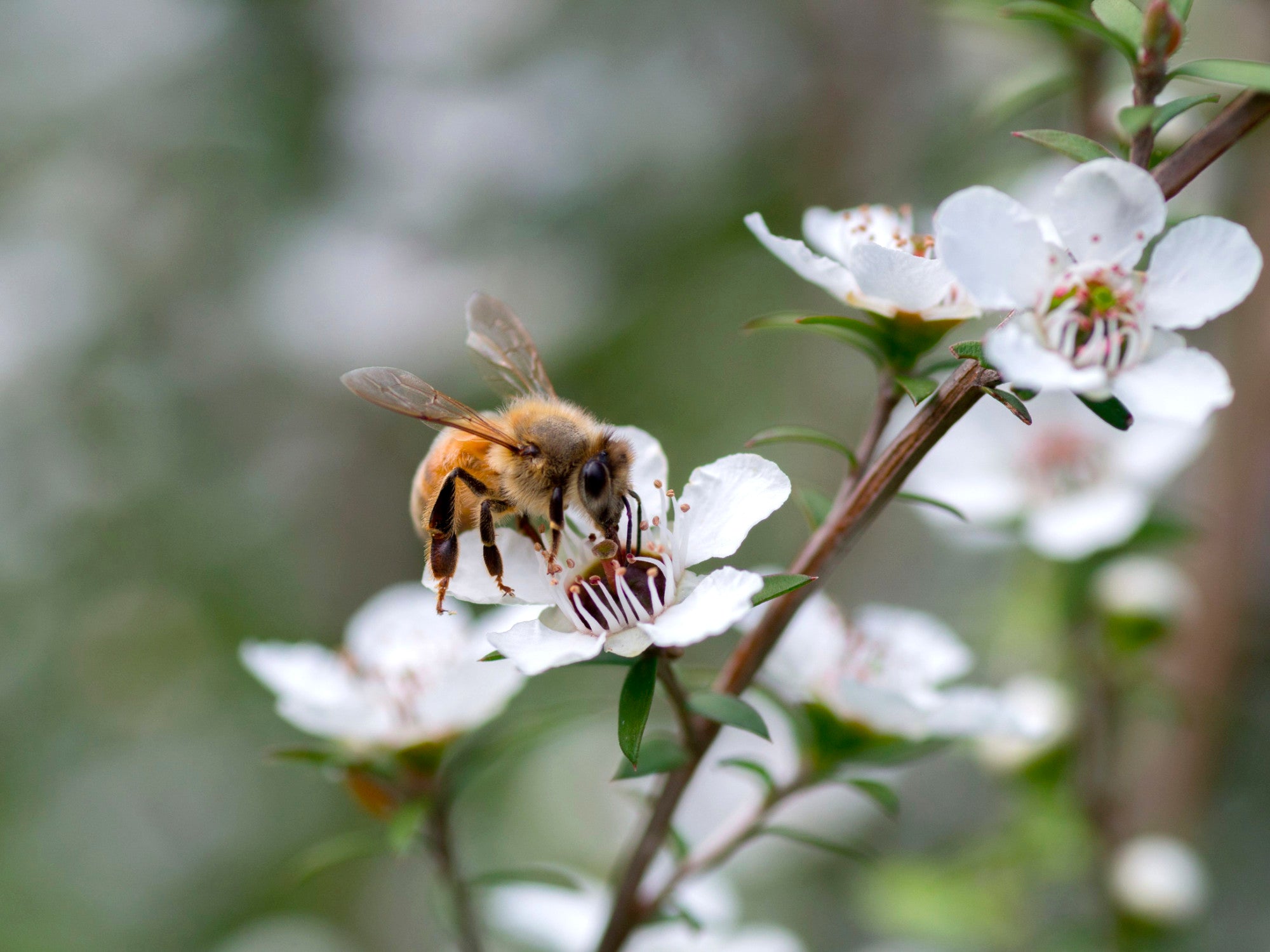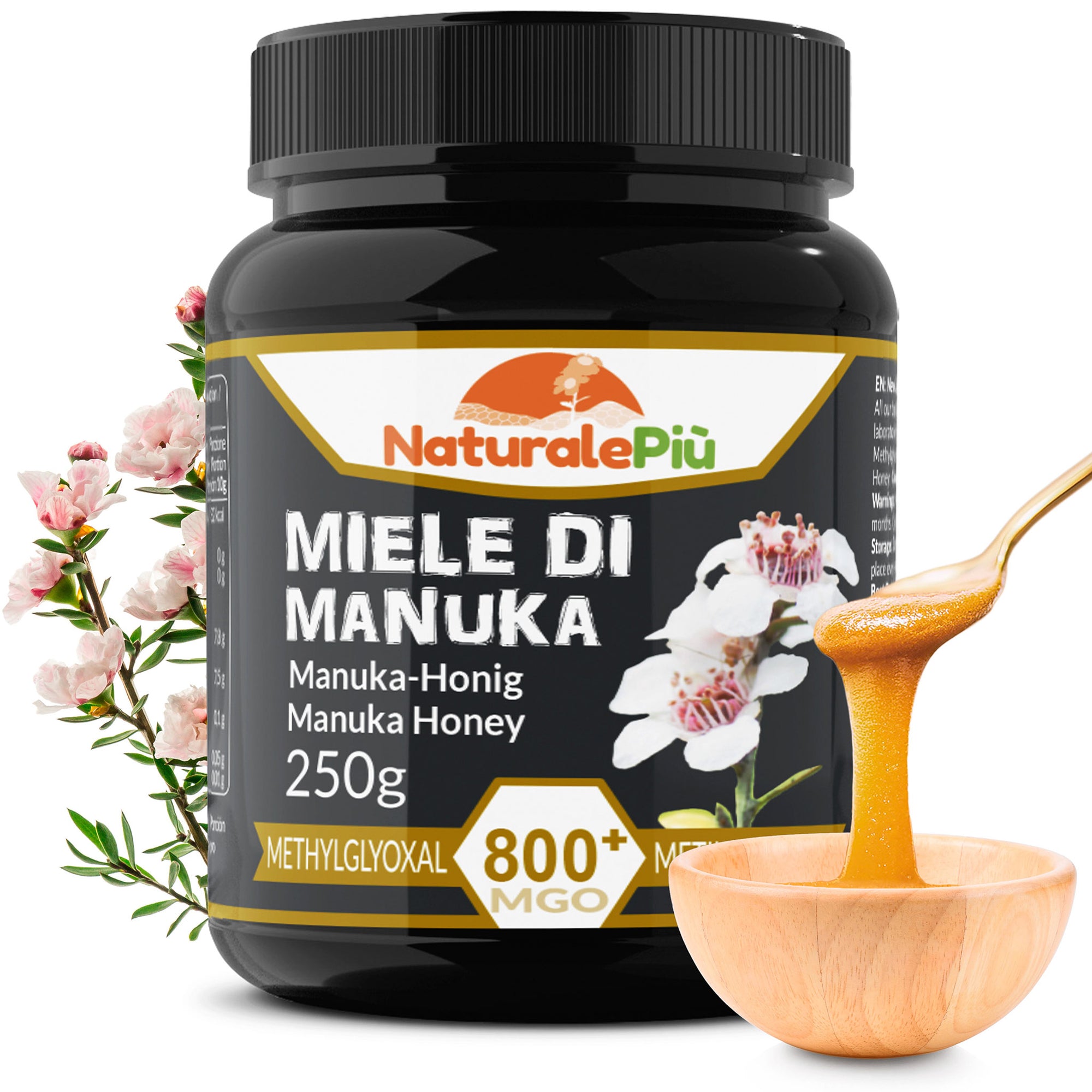
Why Manuka Honey is Special: Extraordinary Health Benefits
In this article, we will understand why Manuka Honey is so special and explore all its extraordinary health benefits.
What is Manuka Honey?
Manuka honey originates from the Manuka plant, which grows uncontaminated in New Zealand and parts of Australia. It is within the vast valleys of Manuka that beekeepers place their hives. Through their tireless work, bees collect the nectar of this plant to create Manuka Honey.
No other honey in nature presents the same characteristics. It is a powerful antimicrobial capable of fighting bacteria, viruses, and fungi. Moreover, Manuka Honey acts selectively, eliminating pathogenic germs while benefiting the useful organisms that keep us healthy.
The Mystery of Manuka Honey’s Unique Properties
For nearly twenty years, researchers at the University of Waikato have sought to identify the mysterious factor that differentiates common honey from active Manuka Honey. A team of German food chemists from the Dresden University of Technology identified methylglyoxal as the key active ingredient, previously referred to as UMF (Unique Manuka Factor).
Osmolarity
Osmolarity contributes to the antibacterial capability of Manuka honey. Honey is primarily composed of sugar, mainly fructose and glucose, which affect its consistency. Mature honey contains low percentages of water (less than 20%), making it an extremely saturated sugar solution. Microorganisms cannot reproduce in mature honey due to the lack of water necessary for their survival.
UMF (Unique Manuka Factor)
For many years, scientists were unable to isolate the active ingredient responsible for Manuka Honey's extraordinary antibacterial properties. It was agreed to call it the Unique Manuka Factor, UMF. The intensity of UMF was compared to the effectiveness of phenolic acid against various bacteria and classified accordingly (e.g., UMF10 if it was as effective as a 10% phenol solution). The "+" sign indicated even higher efficacy.
What is Methylglyoxal?
A team of food chemists at the Dresden University of Technology, led by Thomas Henle, identified the Unique Manuka Factor as methylglyoxal. This active ingredient is responsible for Manuka Honey's powerful antibacterial properties. The quantification of methylglyoxal is now possible in absolute terms, allowing the exact percentage in a given dose of honey to be determined (e.g., 100 mg of methylglyoxal in 1 kg of honey).
In Manuka Honey, the amount of methylglyoxal can vary from about 100 to 800 mg per kg. In other types of honey, it can reach at most 1-2 mg, sometimes up to 20 mg, which is still a very small amount. Methylglyoxal is present in other foods but always in minimal quantities, never exceeding 50 mg per kg. So far, Manuka Honey is the only food in the world that contains significant amounts of dietary methylglyoxal.
Formation of Methylglyoxal
It is not yet clear what environmental conditions induce the plant to enrich its nectar with this substance. This remains a subject of ongoing research. The stress of the plant seems to favor a high content of methylglyoxal in Manuka honey. Possible triggers include saline soils, heat, cold, and constant drought.
Researchers at the Department of Chemistry at the University of Waikato identified DHA (dihydroxyacetone) as the precursor stage of methylglyoxal. DHA, found in immature honey, converts to methylglyoxal as the honey matures, responsible for its powerful antibacterial action. Artificially accelerating the maturation of active Manuka Honey has not been successful.
Classification of Manuka Honey
Manuka Honey is classified solely based on its methylglyoxal concentration. Honeys with similar appearance, consistency, and flavor can be very different in terms of methylglyoxal content. High values of methylglyoxal are not detectable by taste; chemical analysis by accredited laboratories is necessary.
How to Choose Manuka Honey?
For preventive purposes, it is advisable to choose at least MG100+ Manuka Honey, usually sufficient for external use, such as on wounds or burns. For internal use, a higher concentration is needed, such as MG200+, MG400+, MG500+, or the most potent MG800+. The general rule is that the deeper the need, the stronger the honey should be. For example, MG200+ is suitable for mouth, nose, sinus, and throat issues, while MG400+ and MG500+ are for deeper areas like the gastrointestinal tract. MG800+ is the strongest and is used for stubborn infections or gastrointestinal issues.













0 comments